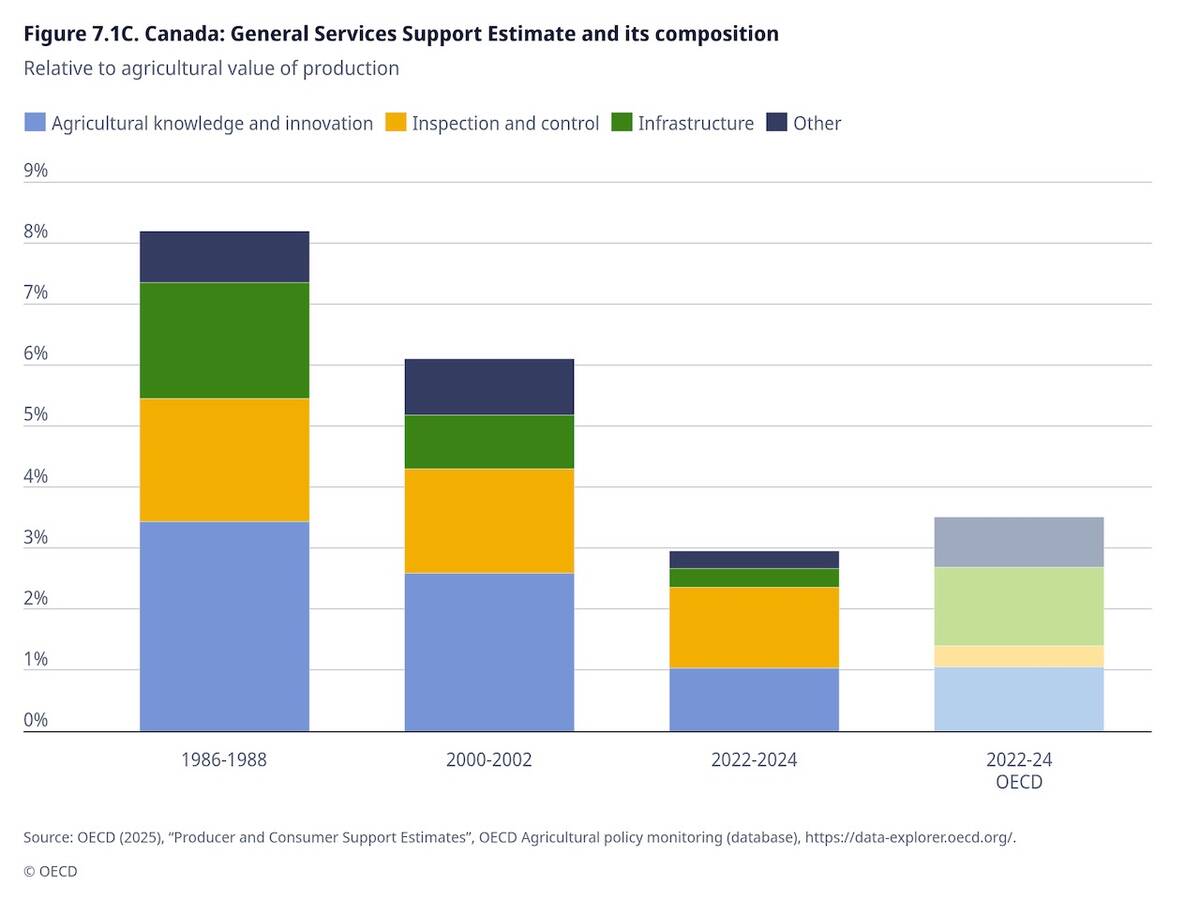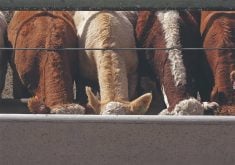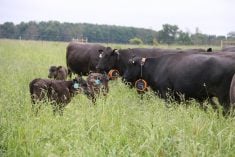Producers are getting closer to the forage bullseye, but balancing quality and quantity remains elusive, according to John Winchell.
Why it matters: When producers over-prioritize the drive to achieve forage quality, they can fall short on quantity, jeopardizing livestock nutrition and farm profitability.
“There’s a balance between quality and quantity, and I think it’s an integral part of what we do,” said Winchell, the Alltech global technical support expert at the Canadian Forage and Grassland Association conference. “If you have to make forage, you can make quality forage.”
Read Also

OECD lauds Canada’s low farm subsidies, criticizes supply management
The Organization for Economic Co-operation and Development lauded Canada’s low farm subsidies, criticized supply management in its global survey of farm support programs.
When assessing a farm’s potential, he delves into the weather history based on the GPS co-ordinates and the heat units from planting until harvest for the crop. Then, he “right-sizes” it for the area.
Winchell said weather is unbeatable, and producers who cling to traditional calendar-based harvesting schedules instead of adapting to climate patterns and utilizing plant maturity and environmental cues could negatively impact forage digestibility, intake and overall nutritional value by delaying harvest.
He used corn as an example, as sometimes growers “chase the carrot of planting longer-day corn” and then start losing starch levels and running into issues like frost. “After six, five, or three months of growing, in the last week, you lose all that quality.”
“Everybody makes forage, but typically, we’re probably a tick late a lot of times on our hay crops and cereals. We’re close but not quite there,” he said. “Scissor cutting, Peaq method, pre-harvest sampling – not many people do it, but God, that makes a big difference.”
Monitoring phenological triggers, like dandelions or daffodils, and growing degree days (GDD), especially in conjunction with pre-harvest sampling, can predict optimal harvest windows.
He suggests two-to-four inches is the new normal because it matches up with digestibility and hits the bullseye for quality forage.
“If you go past that and you get rain, we know what happens. They blow it out, and it’s harvested when it’s headed out,” he said. “And they still want to feed it to their lactating cows.”
“Think about leaves. Think about dandelions and daffodils – everything comes out every year – similar time, but not the same time,” he said. “That takes that calendar idea of harvesting forage and throws it out the window because every year is different.”
Initially, Winchell tracked dandelions as a phenological indicator of the GDD for certain crops, but his repertoire has expanded. In the spring, lilacs blooming, triticale and spring rye are close, no matter where you live, and alfalfa is nearly ready when dame’s rocket blooms and when dandelions against the barn or house go to seed, you better get ready to hit the field, he said.
“The growing seasons in many areas are so much different,” he said. “We were driving naked and blind before, and now there’s so much information at your fingertips …where we can utilize this data.”
Winchell said that utilizing historical data and predictive tools like GDD and measuring NDF digestibility (NDFD30), undigestible NDF (UNDF240) and relative forage quality instead of limiting themselves to older metrics can refine a producer’s forage production strategy.
A dairy producer who follows these directives religiously, tracking his NDF numbers and does a lot of pre-harvest sampling, will see increased milk production and higher feed quality and quantity, said Winchell.
Winchell uses the Climate Smart Farming app, available in five states, to input GDD and get a planting date target. The app sends a reminder a few days before, using a 100-year low and high and providing a 15-year average.
However, he’s crunched numbers for Mount Forest and swathes of Western Ontario and Quebec to assess an area’s season based on historical GDD data with greater confidence.
Knowing your GDD allows you to right-size your corn, Winchell said, cautioning that long falls are not conducive to longer-day corn because if the temperatures drop, it won’t finish.
Shortening the day length on corn, not planting too high a population for the variety and planting a cover crop that thrives in “sweatshirt weather” conditions have significant benefits.
“If you shorten your day up on winter forages, then you can put in cover crops, which we know are very good for the environment,” Winchell said. “But, also, the highest quality feed we probably can make is an early rye and an early triticale.”
The beauty of tracking GDD, phenological triggers, and pre-harvest sampling is that it applies at the individual farm level and can accurately indicate achieving the ideal quality and quantity, even if the method isn’t perfect.















